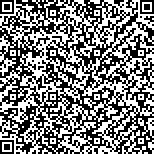| 引用本文: |
黎帅,黄桂兰,张泓,邹莹洁,郭奎奎,邓多喜,赵东凤,谭洁.穴位埋线疗法对缺血性认知障碍模型大鼠的学习记忆力及海马CA1区突触超微结构的影响[J].湖南中医药大学学报,2018,38(11):1267-1272[点击复制] |
|
| |
|
|
| 本文已被:浏览 4701次 下载 2418次 |
| 穴位埋线疗法对缺血性认知障碍模型大鼠的学习记忆力及海马CA1区突触超微结构的影响 |
| 黎帅,黄桂兰,张泓,邹莹洁,郭奎奎,邓多喜,赵东凤,谭洁 |
| (长沙县妇幼保健院, 湖南 长沙 410100;湖南中医药大学针灸推拿学院, 湖南 长沙 410208) |
| 摘要: |
| 目的 观察穴位埋线疗法对缺血性认知障碍模型大鼠学习记忆力及海马CA1区形态学超微结构的影响,并探讨其作用机制。方法 将32只SPF级雄性SD大鼠,随机分为假手术组、模型组、穴位埋线组、药物组,每组8只,采用双侧颈总动脉永久性结扎法复制慢性缺血性认知障碍模型。穴位埋线组取"百会""大椎""肾俞""悬钟",每周1次,共埋线4次;药物组予以单唾液酸四已糖神经节苷脂钠注射液腹腔注射(0.33 mg/kg),每天1次,共4周。采用Morris水迷宫测大鼠学习记忆能力,尼氏染色法观察海马组织内尼氏小体病理变化及染色面积,透射电镜观察大鼠海马CA1区超微结构变化。结果 与假手术组比较,模型组大鼠学习记忆能力明显降低(P<0.01);海马组织尼氏小体面积减少(P<0.01);突触相关结构受损,突触结构参数差异具有统计学意义(P<0.01)。与模型组比较,穴位埋线组大鼠学习记忆能力增强(P<0.01),尼氏小体面积增加(P<0.01),大鼠海马CAl区突触计数增多,突触活性区长度变长,突触间隙宽度变窄,PSD厚度变厚,差异有统计学意义(P<0.01)。与药物组比较,穴位埋线组大鼠学习记忆成绩、尼氏小体面积、海马CA1突触结构超微变化,差异均无统计学意义(P>0.05)。结论 穴位埋线可改善缺血性认知障碍模型大鼠的认知损害,其作用机制可能与其保护海马尼氏小体及改善突触可塑性有关。 |
| 关键词: 缺血性认知障碍 穴位埋线 突触超微结构变化 海马CA1区 尼氏小体 |
| DOI:10.3969/j.issn.1674-070X.2018.11.010 |
| 投稿时间:2018-08-11 |
| 基金项目:湖南省教育厅优秀青年项目(16B197);湖南省研究生创新项目(CX2017B453);湖南省自然基金项目(2018JJ3384) |
|
| Effect of Acupoint Catgut Embedding Therapy on Learning, Memory, and Synaptic Ultrastructure in the Hippocampal CA1 Region in Rats with Ischemic Cognitive Impairment |
| LI Shuai,HUANG Guilan,ZHANG Hong,ZOU Yingjie,GUO Kuikui,DENG Duoxi,ZHAO Dongfeng,TAN Jie |
| (Changsha Maternal and Child Health Hospital, Changsha, Hunan 410100, China;School of Acupuncture, Moxibustion & Tuina, Hunan University of Chinese Medicine, Changsha, Hunan 410208, China) |
| Abstract: |
| Objective To investigate the effect of acupoint catgut embedding therapy on learning, memory, and the morphology and ultrastructure of hippocampal CA1 region in rats with ischemic cognitive impairment, and to explore its therapeutic mechanism. Methods A total of 32 male specific pathogen-free Sprague-Dawley rats were randomly and equally divided into sham-operation group, model group, acupoint catgut embedding group, and medication group. A rat model of chronic ischemic cognitive impairment was established by permanent ligation of both common carotid arteries. The catgut was embedded in the Baihui, Dazhui, Shenshu, and Xuanzhong points once a week for 4 weeks. Rats in the medication group received intraperitoneal injection of 0.33 mg/kg of monosialotetrahexosylganglioside sodium once a day for 4 weeks. Learning and memory abilities of rats were tested by Morris water maze. Nissl staining was used to observe the changes in pathology and area of the Nissl bodies in the hippocampus. Transmission electron microscopy was used to observe ultrastructural changes in the hippocampal CA1 region. Results Compared with the sham-operation group, the model group had significantly reduced learning and memory abilities, significantly reduced area of the Nissl bodies in the hippocampus, and significantly different synaptic structure parameters (all P<0.01); the synapse-related structures were damaged in the model group. Compared with the model group, the acupoint catgut embedding group had significantly improved learning and memory abilities, significantly larger area of the Nissl bodies, a significantly larger number of synapses in the hippocampal CAl region, a significantly elongated synaptic active area, a significantly narrowed synaptic gap, and a significantly thickened postsynaptic density (all P<0.01). There were no significant differences in learning, memory, area of the Nissl bodies, or synaptic ultrastructure in the hippocampal CA1 region between the acupoint catgut embedding group and the medication group (P>0.05). Conclusion Acupoint catgut embedding can reduce cognitive impairment in rats with ischemic cognitive impairment, probably by protection of the Nissl bodies in the hippocampus and the improvement of synaptic plasticity. |
| Key words: ischemic cognitive impairment acupoint catgut embedding ultrastructural changes in synapses hippocampal CA1 region Nissl body |
|

二维码(扫一下试试看!) |
|
|
|
|




